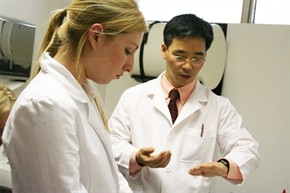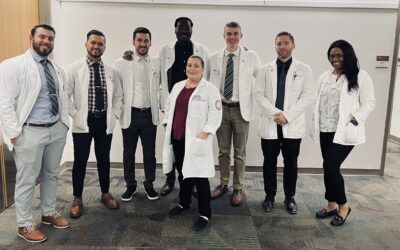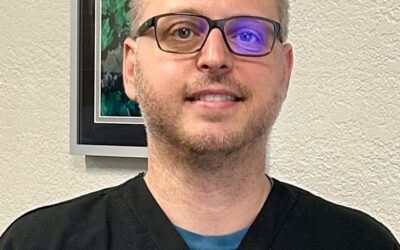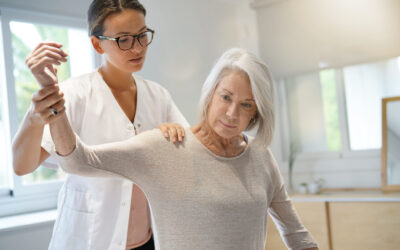National University of Health Sciences is using its cadaver-based anatomy lab to help oriental medicine students become better acupuncturists. “Using cadavers for our anatomy course is invaluable,” says Dr. Yihyun Kwon, who teaches anatomy to the university’s acupuncture and oriental medicine students. “It helps students get a three-dimensional understanding of the acupuncture points they will be needling on their future patients.”
National University is one of the few acupuncture and oriental medicine programs in the world that incorporate the dissection  of cadavers for acupuncture point and meridian studies. “Most programs use visual aids or workbooks, some programs use pre-dissected cadavers, and others may make a one-day field trip to another university to view a cadaver. In our program the acupuncture and oriental medicine students do the actual dissection of cadavers, which is very important,” says Dr. Kwon.
of cadavers for acupuncture point and meridian studies. “Most programs use visual aids or workbooks, some programs use pre-dissected cadavers, and others may make a one-day field trip to another university to view a cadaver. In our program the acupuncture and oriental medicine students do the actual dissection of cadavers, which is very important,” says Dr. Kwon.
Dr. Kwon actually designed the anatomy course, which was the first of its kind in the world when National opened its two master’s degree programs in acupuncture and oriental medicine in 2006. “After seeing the benefits of integrating the functional eastern perspective on acupuncture points with a western structural perspective, other universities in Asia have created new anatomy programs similar to ours.” This includes TianJin University in China, where Kwon recently received his PhD.
National University’s anatomy program enhances the student’s understanding of acupuncture points. “Traditional methods for locating acupuncture points typically lean on palpation skills – feeling for landmarks on the surface of the body,” explains Dr. Kwon. “Palpation alone can be very subjective. That’s why modern acupuncture is leaning more toward exact point location based on anatomical structure. ”
“While our students are dissecting the body layer by layer, through skin, superficial fascia, muscle and bone, they follow the point locations through each layer of tissue. This way, students come away with a deeper understanding of all the anatomical structures their acupuncture needle is stimulating, and at which depths different tissue can be accessed by the needle.”
“Seeing the structures first hand also helps students avoid any risk of needling in the wrong place or at the wrong depth,” says Dr. Kwon. “The student feedback I receive is quite positive. They report better point location skills after the course.”
When asked whether studying anatomy is more in line with western medical studies than a traditional eastern approach, Kwon says: “Accepting western medicine does not hurt or contaminate our eastern medicine, but actually reinforces it and makes strong our weak points. This type of anatomy program is an ideal example of the productive integration of a western and eastern medical education.”
NUHS Advantage in Acupuncture Education
In this video, you’ll hear why third year MSOM student Jacob Suh is excited about learning anatomy from dissecting real human cadavers in the university’s gross anatomy laboratory, and how understanding the physiology and science behind oriental medicine gives him a greater perspective on patient care.




0 Comments